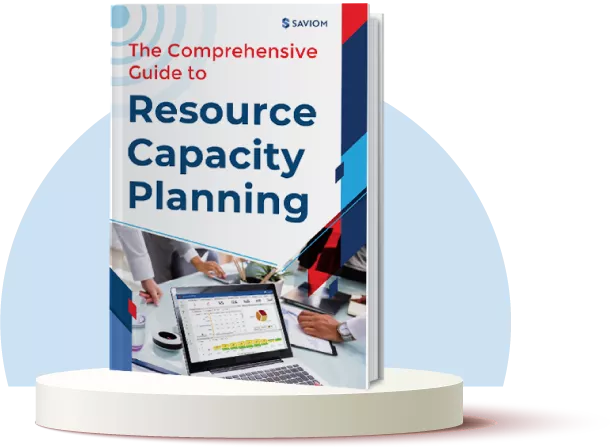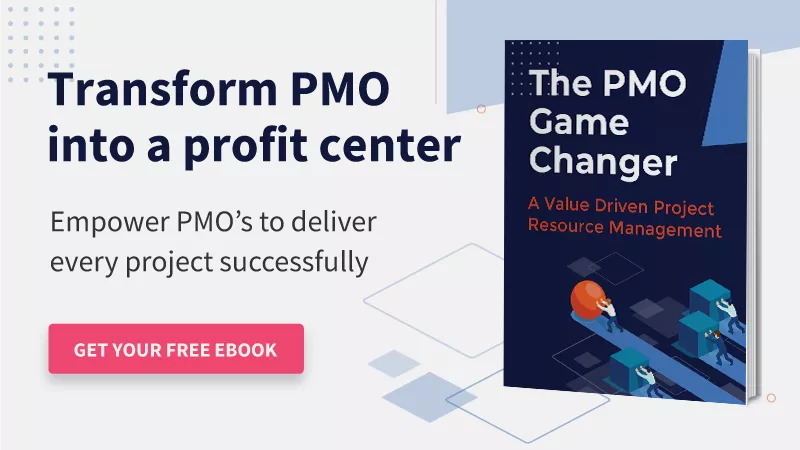Managing multiple projects without a clear organizational structure can lead to chaos. This is where understanding the difference between project vs. program vs. portfolio management can offer clarity to streamline efforts, optimize resources, and achieve strategic objectives.
Let’s understand this with a scenario. You own a construction firm that has bagged several projects, such as building shopping complexes, malls, housing societies, townships, etc.
Now, constructing a township and housing society entails a similar objective of developing a residential haven. So, grouping under one program will help manage their resources, budget, and timeline easily as they are interrelated. Similarly, another program could focus on building shopping complexes or malls as they share a similar goal of constructing a recreational and commercial facility.
The next hierarchy is the portfolio, where you group these construction programs as they all serve the same strategic goal of delivering diverse construction services. This grouping mechanism led to the development of the 3 Ps – project, program, and portfolio.
Now that we have set the stage, let’s understand the difference between project vs. program vs. portfolio management in detail.
Let’s begin.
What is Project Management?
A project is a temporary endeavor with a fixed start and end date aimed at creating a product, service, or result. It is performed by people and bound by budget, timeline, and scope. For example, developing a new customer relationship management (CRM) system for a company would be a project. The project would have specific deliverables, a defined timeline, and a clear budget.
Project management covers everything from drafting a plan to organizing resources, setting deadlines, and monitoring the progress of individual tasks. The professionals responsible for overseeing all the responsibilities related to a project and ensuring project success are known as project managers.
Let’s now explore the key responsibilities of a project manager.
What are the Key Responsibilities of a Project Manager?
A project manager is responsible for the following tasks:
Developing and Managing Project Plans
Once the objective is understood and agreed upon, the project manager creates a comprehensive project plan. It includes deciding on timelines, tasks, milestones, resource allocation, and budget estimates.
Next, project managers develop a work breakdown structure to simplify the project into manageable tasks and sub-tasks. Lastly, they are also responsible for continuously monitoring and updating the plan to reflect changes in critical elements such as scope, timelines, budget, or resources.
Read More: What is a Project Plan & How to Create an Effective One?
Managing Various Project Phases
Project managers oversee the five phases: initiation, planning, execution, monitoring, and closure. In the initiation phase, they define the project goals, and during planning, they develop the schedule and estimate the budget. Following that, they assess the resource requirements for the entire project.
During the execution phase, PMs are responsible for implementing the project plan, managing deliverables, and monitoring the progress. Finally, in the closure stage, they must do a client handover of the project and create the lesson-learned reports.
Scheduling and Optimizing Resources
Project managers are responsible for identifying and allocating resources for various activities and tasks. They must continuously track their utilization levels and apply appropriate resource optimization techniques to ensure no employee is burned out or sitting idle.
They adjust the schedule as the project scope, deadlines, and priorities shift. Moreover, they coordinate with resource managers to address resource conflicts or shortages. Overall, they are responsible for ensuring all project resources are productive and meeting stipulated deadlines.
Read More: What is Resource Scheduling? How to Schedule Resources for Projects Efficiently?
Monitoring and Controlling Risks
Project managers are responsible for identifying, assessing, and preparing for any potential risks. They create, maintain, and update the risk matrix or register to ensure all probable risks are accounted for and tracked meticulously.
They prioritize risks based on their likelihood and impact and develop risk management plans to prevent disruptions during project execution. Lastly, they communicate the plan to project stakeholders and teams to ensure transparency.
Ensuring Stakeholder Communication
Informing the concerned authority about the project’s progress is crucial to keeping them on the same page. Therefore, the project manager regularly shares status updates with stakeholders, sponsors, and team members throughout the project’s lifecycle.
They also inform clients or stakeholders about any major issues or challenges to seek their buy-in for remedial measures. Lastly, they also ensure stakeholders’ concerns are addressed and gather feedback for continuous improvements.
After exploring the responsibilities of a project manager, let’s now explore program management.
Read More: Who are Project Stakeholders and How to Manage Them Efficiently?
What is Program Management?
A program is a group of similar or interrelated projects. The aim is to regulate projects that have a common goal and would yield better results when managed together. For instance, a “Digital Transformation Program” in a bank could involve multiple projects, such as developing an online banking platform, creating a mobile app, and upgrading the bank’s internal data security system. These projects are connected by the overarching goal of modernizing the bank’s digital services.
Organizations can achieve greater efficiency by managing multiple projects as part of a unified program rather than managing each project separately. This approach allows for streamlined processes, effective resource allocation, and better risk management across the entire program.
Moreover, the professionals responsible for managing the entire program are known as the program managers.
Now that we know what program management is, let’s see what a program manager does.
What are the Key Responsibilities of a Program Manager?
A program manager has the following responsibilities to look after:
Aligning Program Goals with Business Strategy
A program roadmap should link individual projects to the organization’s strategic priorities like growth, efficiency, or innovation. Therefore, program managers oversee every project within the program and ensure that each initiative contributes to the organization’s overall success.
For this, they work closely with senior leadership to understand the firm’s mission and vision. Moreover, they regularly review and adjust program goals to meet changing business needs. This prevents wasted resources and misaligned objectives.
Read More: A Program Director’s Guide to Leveraging a Value-Driven PMO
Tracking Individual Project’s Progress and ROI
Program managers define the KPIs to measure projects, including timelines, quality of deliverables, and budget adherence. Next, they track the progress of individual projects to ensure alignment with the program’s objective and address issues hindering success.
They support project managers by eliminating roadblocks and providing guidance and resources as required. Additionally, they evaluate the ROI using performance metrics to confirm each project contributes to program goals and organizational strategy.
Supervising Resource Allocation at a Program Level
The program manager analyzes resource requirements across programs to balance demands and prevent under/over-utilization. They assign the right team members to projects and move them across the program during the ramp-up and ramp-down phases.
This helps minimize bench time and optimally utilizes in-house resources instead of hiring new workers. Furthermore, program managers govern finances and other assets and adjust them between projects to avoid budget or schedule overruns.
Read More: What is Resource Allocation, and Why is it Important?
Resolving Program-Level Risk
Program-level risk management involves identifying possible threats to the program and implementing an appropriate mitigation strategy. Program managers achieve this by developing a risk governance framework to identify and monitor emerging risks across the program.
Accordingly, they develop appropriate mitigation strategies and contingency plans to address each identified risk. Moreover, they provide regular updates and coordinate with individual project managers and teams to manage risks effectively, ensuring the program stays on course.
Communication with Stakeholders and Senior Leadership
Program managers are a central point of contact between stakeholders, senior leadership, and project managers. They keep stakeholders up-to-date with program performance, ROI, possible risks, and resource utilization.
They develop tailored communication strategies for different stakeholder groups. Additionally, they maintain transparency about the issues and seek stakeholder feedback before implementing corrective measures for successful program management.
Now that the program manager roles are clear, let’s discuss what portfolio management entails.
What is Portfolio Management?
A portfolio encompasses different programs and projects within the same organization, whether related or independent. Its primary purpose is to gain strategic oversight of all the initiatives to ensure alignment with the organization’s objectives. For example, an IT company might have a portfolio of multiple programs—one for enterprise software for healthcare, another for financial institutions, and a third for building a cloud-based cybersecurity solution. These programs may serve different industries but are aligned with the firm’s broader strategic goal.
Portfolio management provides a broader perspective to facilitate data-driven decision-making and enable benefits realization. It also allows for dynamic adjustment to priorities to ensure that every project adds value to the organization’s success story. In addition, professionals responsible for overseeing the entire portfolio are called portfolio managers.
As we now understand what portfolio management is, let’s explore the responsibilities of project portfolio managers.
What are the Key Responsibilities of a Portfolio Manager?
A portfolio manager is responsible for overseeing the following tasks:
Selecting and Prioritizing Projects & Programs Based on Strategic Goals
The portfolio manager creates a list of potential pipeline projects and selects them based on predefined standardized selection criteria. The criteria include business value, ROI, resource requirements, alignment with strategic goals, etc.
Moreover, the portfolio manager evaluates and prioritizes projects and allocates resources (human and non-human) to high-value ventures, followed by other endeavors.
Monitoring Portfolio Performance and ROI
Portfolio managers establish organizational metrics and KPIs to measure the success of each project and program. They monitor budgets, timelines, and resource utilization to prevent discrepancies, delays, or cost overruns that may affect the entire portfolio.
Moreover, portfolio managers calculate the ROI of completed projects to determine their strategic contribution and profitability. They also provide actionable insights to adjust project priorities if the portfolio is underperforming.
Read More: What is Project Portfolio Management, and Why is it Important?
Ensuring Risk Governance at the Portfolio Level
A portfolio manager is responsible for managing portfolio-level risks. These include external factors like environmental disasters, internal issues like operational challenges, and execution risks like limited resources.
To identify, assess, and proactively eliminate these risks, portfolio managers lead a governance team of seasoned program managers, subject matter experts, and financial analysts and conduct regular audits.
Regular Communication with Senior Management
The portfolio manager keeps the higher-ups informed of the overall progress of the portfolio and conveys any bottlenecks that need timely intervention. Moreover, when the portfolio manager implements any project, program, or portfolio-level change, they justify it with the reason to the senior management.
It helps retain their trust, get required assistance, foster transparency, and ensure alignment between the portfolio and organizational goals. Lastly, they gather feedback from senior management to refine project priorities and execution strategies
Review and Optimize the Portfolio Periodically
A portfolio manager periodically reviews the portfolio to ensure resources like time, budget, and workforce are effectively balanced across all ongoing and future projects. They optimize portfolio value by maximizing benefits while minimizing costs and risks.
Furthermore, they are responsible for using techniques like value analysis, portfolio optimization, and risk assessment to align the portfolio with organizational goals. Lastly, they update portfolio management strategies and frameworks based on lessons learned from past projects.
Following the responsibilities of portfolio managers, let’s dive into the differences between project, program, and portfolio management.
Read More: What Project Interdependencies Span Your Portfolio?
Project vs. Program vs. Portfolio Management: What are the Key Differences?
The table below gives a detailed list of differences between project vs. program vs. portfolio management.
| Aspect | Project Management | Program Management | Portfolio Management |
|---|---|---|---|
| Scope | Focuses on managing a single project. | Oversees a group of interrelated projects. | Manages all programs and projects across the organization. |
| Objective | To deliver the project on time, within budget, and to specifications | To ensure all projects within the program strive towards the same goals. | To align all programs and projects with the organization’s strategic objectives |
| Key Focus | Day-to-day management of tasks, deadlines, and resources for a single project. | Coordination and communication among related projects to achieve program objectives. | Strategic alignment, prioritization, and resource allocation across all projects and programs. |
| Success Metrics | Measured by meeting project goals, including schedule, budget, and quality. | Measured by the combined success of all projects within the program and their alignment to strategic goals. | Measured by the portfolio’s ability to deliver maximum ROI and support long-term business objectives. |
| Resource Management | Manages resources specific to the project. | Coordinates resources across all projects within the program. | Balances resources across all programs and projects in the portfolio. |
| Decision-Making | Focused on execution-level decisions to deliver the project. | Focused on strategic decisions to align projects within a program. | Focused on high-level decisions about which programs and projects to prioritize based on strategic value. |
| Stakeholder Interaction | Interacts with project-specific stakeholders. | Communicates with program stakeholders and ensures alignment between project managers. | Engages with senior leadership and provides insights into project and program performance. |
Read More: 10 Ways to Improve Cross-Departmental Collaboration
How Do Project, Program, and Portfolio Management Work Together?
A project is a part of a program, while a program is a part of a portfolio.
It implies that a project is the smallest component in the hierarchy of the 3Ps (project, program, portfolio), while a portfolio is at the topmost level.
Project, program, and portfolio management function as interconnected layers to achieve organizational goals. Project management focuses on delivering specific objectives, whereas program management aligns related projects with broader objectives.
On the other hand, portfolio management ensures that all programs and projects are coordinated effectively to support the organization’s strategic vision. Now, when it comes to roles and responsibilities, project managers provide updates to program managers, who coordinate resources and address dependencies.
Then, program managers collaborate with portfolio managers to ensure they have the requisite tangible and intangible resources to execute the programs efficiently. On top of that, portfolio managers are responsible for evaluating performance metrics such as return on investment (ROI), utilization rates, earned value, etc., and analyzing the outcomes of all projects and programs. This collaboration ensures seamless integration of all levels, driving efficiency and bringing sustainable growth to business.
Conclusion
As already evident, the scope is defined in a broader range when you scale from project management to program/portfolio management. Though all three domains are essentially different, they are complementary and interrelated to each other. Therefore, it is vital for the project managers, program managers, and portfolio managers to coordinate and ensure overall business growth and success.
The Glossary
Read More: Glossary of Resource Workforce Planning, Scheduling and Management











